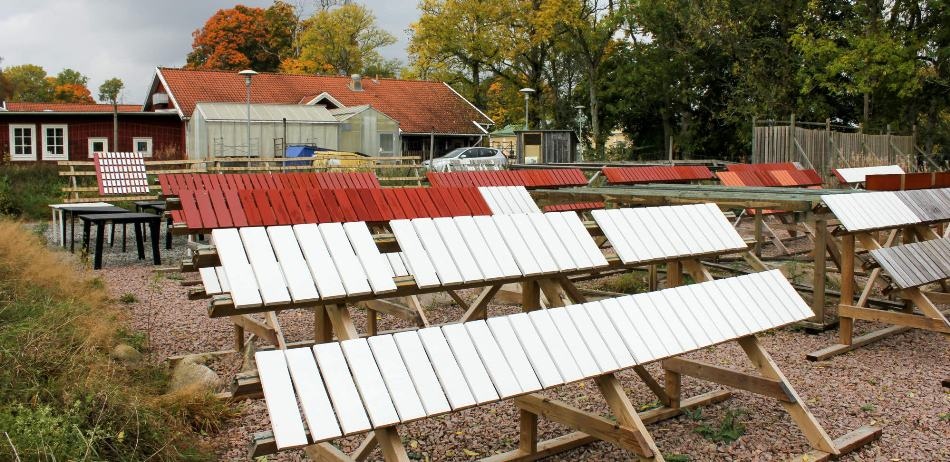Apr 30 2018
The durability of a painted wood panel depends a lot on the choice of wood material. Some of the results of a recent Linnaeus University research on the topic explain that there should be less mold growth on the heartwood, that the growth is also influenced by the color of the panel, and that wide annual rings in the wood give fewer cracks.
 Image credit: Linnaeus University
Image credit: Linnaeus University
One of Sweden's most common species of wood is the spruce, which is frequently used for house façades. But various parts of the log have different features, and the choice of wood is thus crucial if one wants a durable panel. However, this is not considered these days for wood used for house façades, for example.
At the Department of Forestry and Wood Technology at Linnaeus University, research on the durability of coated wood has been in progress for a long time. In the past five years, an experiment has been conducted where painted panels of wood from spruce were exposed to weather and wind.
The panels were coated with commercial paint systems, i.e., acrylate paint, alkyd paint, or linseed oil. The wood material was heartwood (from the tree’s middle portion) or sap (from the tree’s outer portion), with two varying widths of annual rings.
We found that panels with wide annual rings had fewer cracks than those with narrow ones. This was especially true of panels painted with diffuse-open coatings. Fewest cracks had panels of fast-grown heartwood.
Tinh Sjökvist, Doctoral Student in Forestry & Wood Technology
On the subject of the microbial discoloration on the surface, it was discovered that panels of heartwood were least influenced. The team also found a vivid effect of the coloration. After five years, the panels coated with red paint were totally free from growth, while all white panels had a varied degree of growth and contamination.
We can expressly see that the choice of wood material has a clear effect on the durability of a painted panel, in a number of ways. This is an important support for our further research with the aim of developing coated wood products with higher durability and longer maintenance intervals.
Åsa Blom, Associate Professor & Head of the Department of Forestry & Wood Technology
The research is part of the Bridge, a partnership between Linnaeus University and IKEA, with the aim to create a better everyday life in homes. The trade organization SVEFF has also contributed to this research.